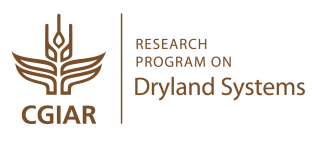Powering up Nutritious Food Production in India with Spatial Solutions
Published on: June 2, 2016, Submitted by Chandrashekhar Biradar on: May 26, 2016
ICARDA's Geoinformatics Unit empowers farmers and facilitates the strategic development of interventions for dryland systems.
blog missing image
In India, the demand of nutritional food grains continues to rise while the total area of arable land is not expected to increase significantly. There are several ways to increase the food grain production, such as refining the agricultural intensification practices already in place and investing in crop diversification. Another example of untapped opportunity lies in the potential use of crop-fallows such as rice-fallows.
These crop-fallows are very dynamic in nature, travelling year by year across landscapes, mostly driven by monsoon climate but also by human intervention such as economic, agronomic, and cultural practices. The implementation of a digital, open access decision system, able to provide timely information on the arable land area, would facilitate the development of appropriate intervention packages, optimizing land management and boosting production.
ICARDA’s "Geoinformatics Solutions for Integrated Agro-Systems" (GIS) can provide that kind of digital service and more, harnessing the power of big-data analytics with near real-time satellite remote sensing, pivotal climate and in-situ observations, monitoring and pinpointing of suitable introversion zones. This unique capability is empowering farmers, researchers and policy-makers, providing them an holistic perspective to tune decisions and actions, focusing on land management, crops and water usage, agricultural inputs and markets.
The spatial analysis and visualization tool, for example, powers up a research in India on "Intensification and crop diversification of nutrient rich food legumes". The study allows scientists to tap vast tracts of land left fallow after the first harvest of the year as the rice fallows, useful to grow pulses and oil seeds. The mapping allows farmers to strategically intervene, using the tracts to grow grain legume varieties fit to grow between two cropping seasons. This actions result in an additional crop of pulses, which supplies fodder, boosts income and benefits the ecosystem.
The digital interactive map, comprehensive of land coverage and vegetation patterns, can show the length of fallows duration, the start and end of the fallow periods, their seasonality, cropping intensity, and more. By analyzing these data, is possible to identify potential areas where high-yielding, short or long-duration legumes can be grown in the fallows. More than that, with cutting edge researches crop breeders have developed extra early varieties (as little as 58 days), dual purpose crops, zero-tillage techniques, leading to high-efficiency land management practices.
Another example of geoinformatics' impact on agriculture is presented by the recent advances of the NASA’s mission mapping soil moisture, that recently provided crucial information to track the base level of residual moisture. This data can now contribute to inform better decisions, targeting landscapes with crops featuring higher return on investment, adaptability, and fit with the local irrigation assets.
ICARDA’s "GeSTA" online open access tool can help identify areas of interest, to target and accelerate decision making and interventions, by providing strategic information. Tapping the opportunities presented by the soil will benefit returns on investments and enforce the development of sustainable land, water and crop management practices, promoting food security and better livelihoods in agricultural systems.




